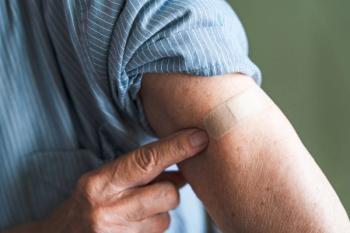
|Articles|November 1, 2018
Shingles and PHN by the Numbers
Author(s)Beth Longware Duff
Shingles has a lot of numbers to consider, starting with one million cases a year in the United States.
Advertisement
An estimated one million cases of shingles (herpes zoster, HZ) occur in the United States each year. That’s just one of the numbers associated with the condition and its most common complication, postherpetic neuralgia (PHN). Here are a few more:
- One out of three adults will develop shingles in their lifetime.
- The risk of HZ increases with age, with approximately half of all cases occurring in persons over the age of 60.
- The
incidence in the U.S. population is approximately 4 cases per 1,000 annually. Among people 60 years of age and older, the incidence is about 10 cases per 1,000.
- More than 99% of Americans 40 years and older have had chickenpox, putting them at risk of developing shingles.
- Most people who develop shingles will have it only once. However, it is possible to get it a second or even third time.
- In 2016, research found that only 33% of eligible patients were vaccinated. The reasons were reportedly the limited efficacy of the Zostavax vaccine, a lack of awareness that the illness can be prevented, and cost concerns.
- A 2018 Harris Poll commissioned by the American Osteopathic Association found that 62% of Americans are aware that there is a shingles vaccine.
- Americans make
2.1 million doctor visits annually due to shingles or related complications.
- People age 65 and older are seven times more likely to get shingles than their younger counterparts (1.5% compared with 0.2%, respectively).
- People with herpes zoster usually have a rash in one or two adjacent dermatomes that does not cross the body’s midline. However, approximately 20% of people have a rash that overlaps and affects three or more adjacent dermatomes, a condition known as disseminated zoster.
- The shingles rash consists of blisters that typically scab over in 7 to 10 days. It takes 2 to 4 weeks for the rash to clear up, and 3 to 5 weeks to recover from shingles.
- More than one-third of shingles patients develop complications.
- Ten to 15% of shingles patients develop postherpetic neuralgia (
PHN ), a pain syndrome that occurs following an outbreak of shingles. PHN is typically defined as pain that endures for more than 30 days after the rash subsides, or for more than 90 days after rash onset. It can last for weeks, months, or even years.
- One to four percent of shingles patients end up hospitalized with complications.
- About 30% of all people hospitalized with herpes zoster have compromised or suppressed immune systems.
- CDC
statistics from 2012 reveal that an estimated $1 billion was spent annually on direct medical care costs for herpes zoster in the United States.
- Two vaccines are currently available to help prevent shingles: Shingrix and Zostavax.
- Shingrix is the CDC’s
preferred vaccine for healthy adults 50 years and older, who should get two doses of the vaccine 2 to 6 months apart.
- Shingrix is more than 90% effective across the recommended age population at preventing shingles and PHN.
Newsletter
Pharmacy practice is always changing. Stay ahead of the curve with the Drug Topics newsletter and get the latest drug information, industry trends, and patient care tips.
Advertisement
Latest CME
Advertisement
Advertisement
Trending on Drug Topics
1
Targeted Coordination Is Crucial in Boosting Pneumococcal Vaccine Coverage
2
Trump Executive Order Set to Reclassify Marijuana, Improve CBD Access
3
REM-Dominant Sleep Apnea Is Significantly More Prominent Following COVID-19
4
From Policy to Practice: Elevating Pharmacy’s Role in Quality and Patient Safety
5

















































































































